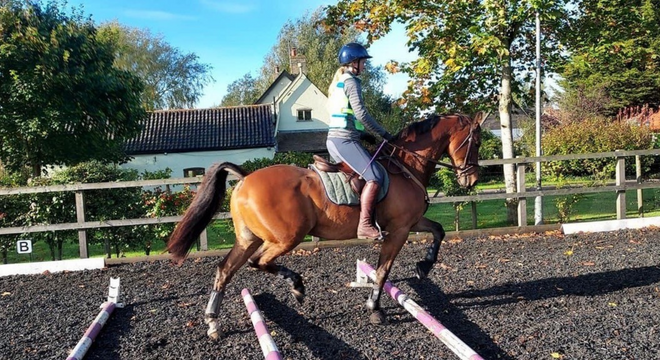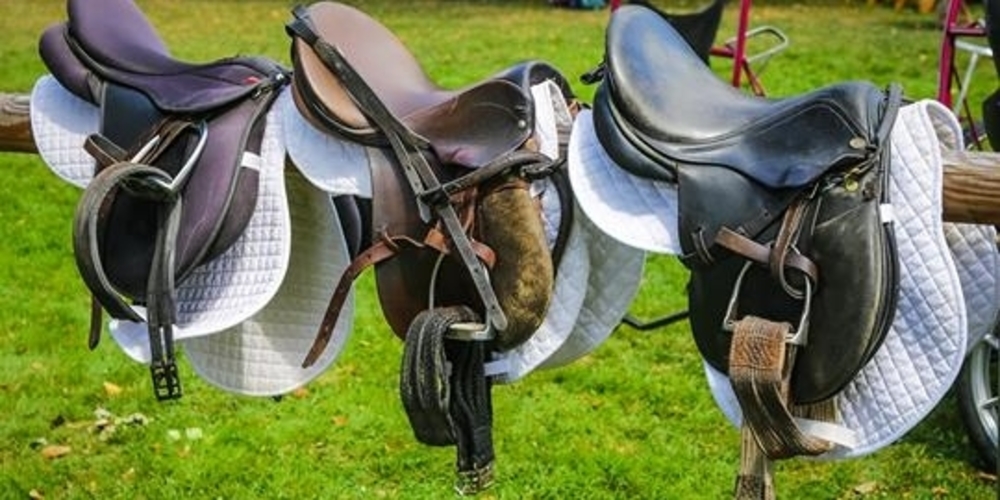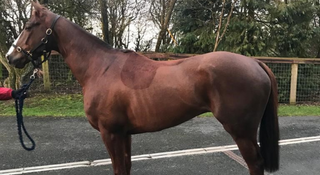
The power of polework
Polework is a fun and different way to exercise both horse and rider. It involves setting out variations of poles on the ground to...
10 August 2022
Read More
Saddle up and learn about the history of the horse saddle
Let’s face it – if you haven’t got a saddle you’re unlikely to travel very far on a horse. Riding bareback needs exquisite balance and a high pain threshold and usually isn’t much fun for the horse or for the rider over long periods. Several thousand years ago our ancestors worked out that a saddle of sorts would provide greater comfort and stability during travel, work and warfare.
1. Rudimentary saddles
History tells us that it was the Assyrian cavalry back in 700 BC who first began to use pads and cloths, fixed to the horse’s back with a combination of girths, surcingles, breast straps and cruppers. Prior to this it seems that riders went bareback or sat on a piece of cloth or animal skin. Imagine the skill of Alexander the Great mounted on his beautiful black horse Bucephalus, leading his army to battle, all with no saddle or stirrups – today he would be a social media sensation!
The more ornate the saddle the wealthier and more important the rider was perceived to be. Leather, precious metals, jewels, cow hide, felt and hair were used as decorations. The combination of showy horse and saddle was the equivalent status symbol of today’s flashy car.
2. The first trees
Around 500 years later, in 200 BC it’s thought that a basic saddle tree was devised in Asia. It helped to distribute the weight across the horse’s back more evenly, keeping the rider’s weight off the horse’s spine, improving comfort for both horse and rider and prolonging its working life.
The Romans used a saddle based on a wooden tree with a four horn design – two at the front and two at the back, secured with a girth, breast strap and crupper. It didn’t have any stirrups and with all those horns looks like it may have been a challenge to mount!
3. The first leather saddles
The Samartians, fine horsemen of the 3rd century AD who also had women warriors in their ranks, developed leather saddles and are also believed to have introduced the stirrup and the spur. The Huns, a nomadic tribe of central Asia, brought these saddles back to Europe.
During the next 1000 years saddles were improved, for better balance, safety and comfort. Mediaeval knights particularly relied on the development of a strong saddle with a higher cantle and pommel, to help keep them on board in battle. It was padded with wool or horse hair and covered with leather or cloth.
It is this style of saddle that has largely evolved into the saddles we use today.
Modern saddles
Today saddles have evolved to suit particular disciplines.
General purpose saddles allow the rider to adopt a dressage or jumping position and are a good all round saddle for an amateur rider.
Dressage saddles have a longer straighter saddle flap and a deeper seat to enable the rider to lengthen the leg and sit in an elegant, straight position. The girth straps on a dressage saddle are longer and the girth itself is shorter to prevent the buckles from coming into contact with the rider’s legs.
Jumping saddles have forward cut, padded saddle flaps to enable the rider to balance securely with shorter stirrups when jumping.
Racing saddles are extremely lightweight and have a flat seat and small, forward cut saddle flaps. The jockey rides with very short stirrups, crouched over the horse to minimise wind resistance as the horse gallops.
Side saddles are cleverly designed to enable the rider to sit centrally while both legs are on the same side. The rider places her left leg in a stirrup and the right leg is hooked over the ‘fixed head’. For greater stability there is a ‘leaping head’ under which the rider presses her upper left leg.
Show saddles are quite simply designed to show the conformation of the horse to best effect. They tend to have a long straight flap to expose the shoulder cleanly and no knee rolls.
Western saddles and stock saddles have a wider seat and cantle for comfort and a broader weight bearing area across the horse’s back. They have wide stirrups and a horn at the front of the saddle which was originally used as an anchor point for roping cattle. The western saddle is secured to the horse but a cinch, tied with a leather strap rather than a buckle.
Did you know…
Saddles aren’t exclusively for horses………. camels, oxen, yaks, elephants and even reindeer, zebra and ostrich have been saddled up and ridden.
References:
https://www.thehorseguide.com/horse-riding-equipment/the-history-of-saddles/
https://en.wikipedia.org/wiki/Working_animal#Riding_animals_or_mounts
http://www.limebrook.com/saddlehistory.html
https://en.wikipedia.org/wiki/Saddle

Polework is a fun and different way to exercise both horse and rider. It involves setting out variations of poles on the ground to...
10 August 2022
Read More
Polework is a fun and different way to exercise both horse and rider. It involves setting out variations of poles on the ground to...
10 August 2022
Read More
Retraining a racehorse to become a leisure or competition horse can be very rewarding and enjoyable.
02 December 2021
Read More